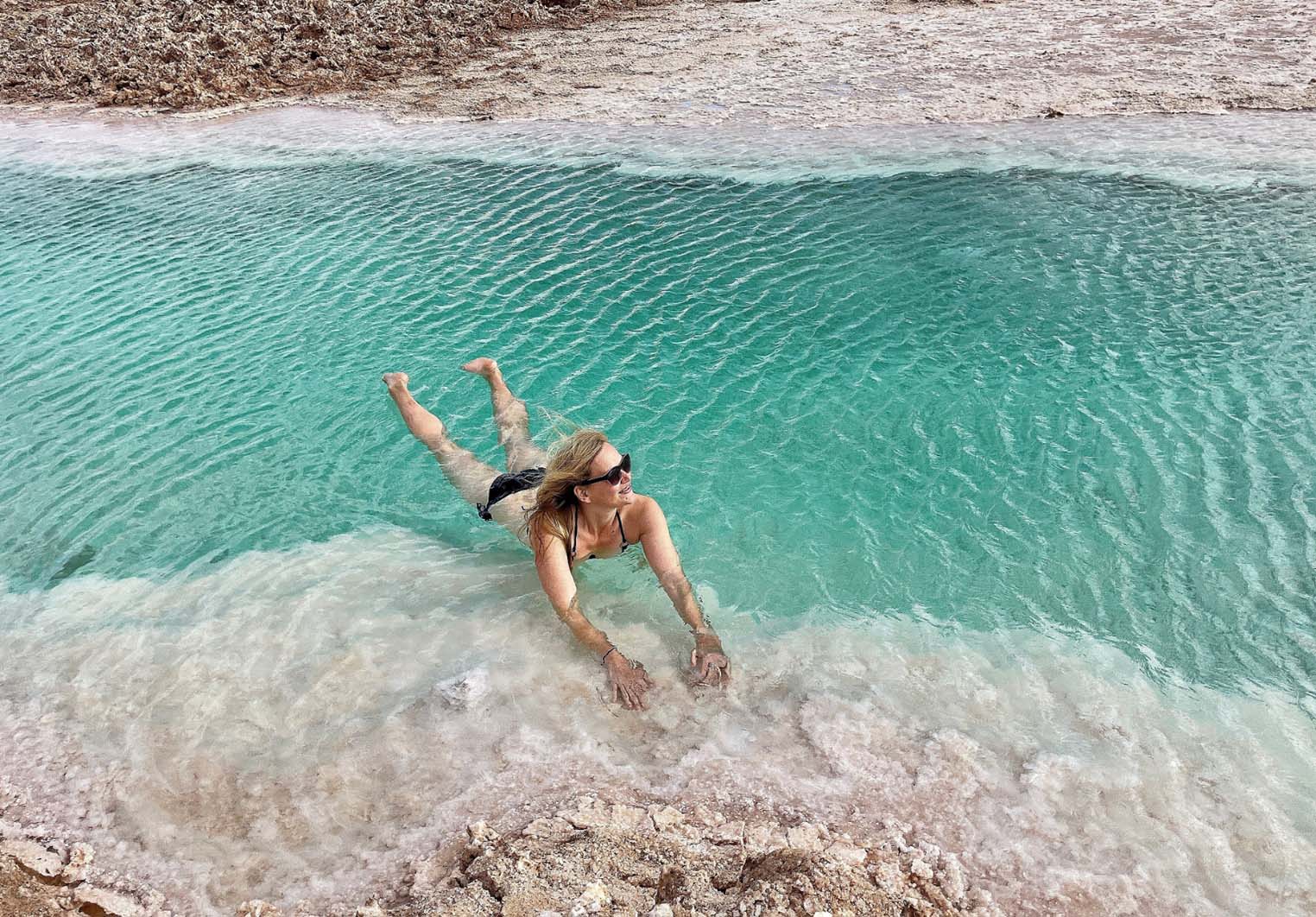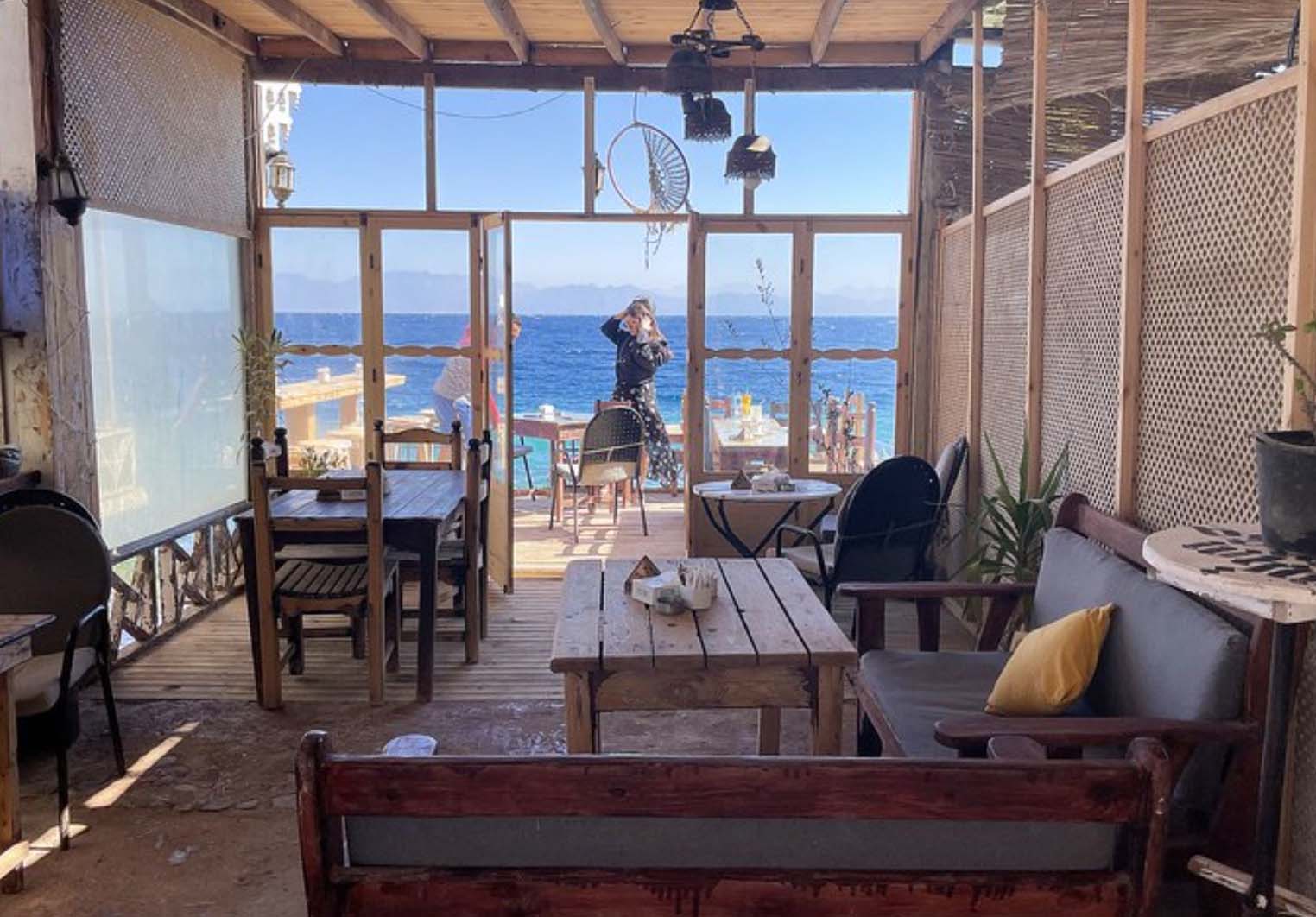When I landed in Cairo and began planning my Egyptian journey, I was taken by surprise to discover just how far Siwa was from all the other places I had initially planned to visit. However, I soon found out that Siwa was a place that many people couldn’t stop raving about. Each person I met was talking about how magical Siwa was. When I reached the Red Sea on the eastern border of Egypt, I decided that I couldn’t leave Egypt without visiting this desert oasis near the Libyan border.
I’m glad I did it! It turns out that Siwa was my favorite place in all of Egypt. Most people only spend 3 or 4 days in Siwa, but if you have a few extra days, it’s well worth spending a week there to experience the magic of the desert. If you’re pressed for time, I recommend setting aside at least 3 days to make the long journey worthwhile.
In Siwa, you’ll find stunning natural landscapes, beautiful desert scenery, and friendly, welcoming locals. There are plenty of activities to choose from, including camel rides, desert hikes, stargazing, and visits to local tribes. Don’t miss the chance to bask in the golden sunlight at sunrise and sunset, a spectacular sight unique to Siwa.
In Siwa, you can also try local cuisine, sampling delicious Arabic pastries and grilled meats. The nights here are peaceful and pleasant, with stars twinkling in the pitch-black desert night sky, immersing you in the serenity and wonder of nature.
Siwa is a rare gem that’s worth a visit, allowing you to deeply experience the beauty and magic of the Egyptian desert. No matter how long you stay here, it will leave a lasting impression, making it an unforgettable journey.
The Best Activities in Siwa
1. Explore Shali
Shali, the old fortress, is located in the town center and is built on natural rock formations. The fortress and the surrounding buildings are constructed in Siwa’s unique style, using natural building materials from the area, primarily salt from the nearby salt lakes and mud. This mixture of salt, mud, and bricks is known as “kershef,” and all of Siwa’s buildings were traditionally constructed with it. The roofs of the buildings are reinforced with palm tree trunks. Unfortunately, in the 1920s, heavy rains over three days caused significant damage to most of Shali and the surrounding houses, leading to their abandonment as residents sought new homes
The Shali ruins remain fascinating, towering above the city’s new buildings. They not only offer a glimpse into Siwa’s past but also provide panoramic views of the desert oasis. Spend a few hours wandering through the labyrinthine ruins and partially collapsed structures. These buildings often have deep cracks, and with careful observation, you can spot large chunks of salt, palm tree trunks, and still-intact ceilings above doorframes.
Tip: If it’s a clear day, stay to watch the sunset. The sunset view from Shali is truly spectacular!
Cost: Free
2. 4×4 Desert Adventure
When I signed up for the 4×4 desert adventure, I imagined leisurely traversing the vast sand dunes of the Sahara Desert. However, the reality of this trip was quite different from my expectations. We didn’t experience a smooth desert ride but instead sped up and down the sand dunes at a thrilling pace, making me feel like I was in some kind of off-road race. Our driver seemed to think he was a racing driver, speeding over sand dunes with 90-degree vertical drops. For most of the journey, my adrenaline was soaring, and there were moments when I was convinced the vehicle would flip. Miraculously, we all survived the trip unscathed (don’t ask about seat belts)
However, there were moments that made this wild desert adventure worth the countless near-heart-attack experiences. I should note that most of my companions were exhilarated most of the time – evidently, for some, this was as enjoyable as a rollercoaster ride. If you enjoy roller coasters, you’ll certainly love the driving part of this journey! We stopped multiple times to admire the beauty of the desert, marveling at the striking sand dune formations and the uniform sand ripples shaped by the wind. We also stopped at a spot in the desert where there were more “rocks” than the usual soft sand dunes. Here, we discovered hundreds of seashell fossils, evidence that this entire region was once covered by the sea thousands of years ago.
Before returning to Siwa, the highlight of this trip was a desert picnic. You can enjoy tea or Arabic coffee while watching the sunset, along with some cookies and peanuts. Despite finding the driving quite nerve-wracking, in hindsight, it was one of the best things to do in Siwa – don’t miss out on the desert!
Cost: The current price for each jeep is 1,500 Egyptian pounds, so depending on the number of people sharing the cost, it can be as low as 250 Egyptian pounds per person (a 4×4 can accommodate up to 6 people).
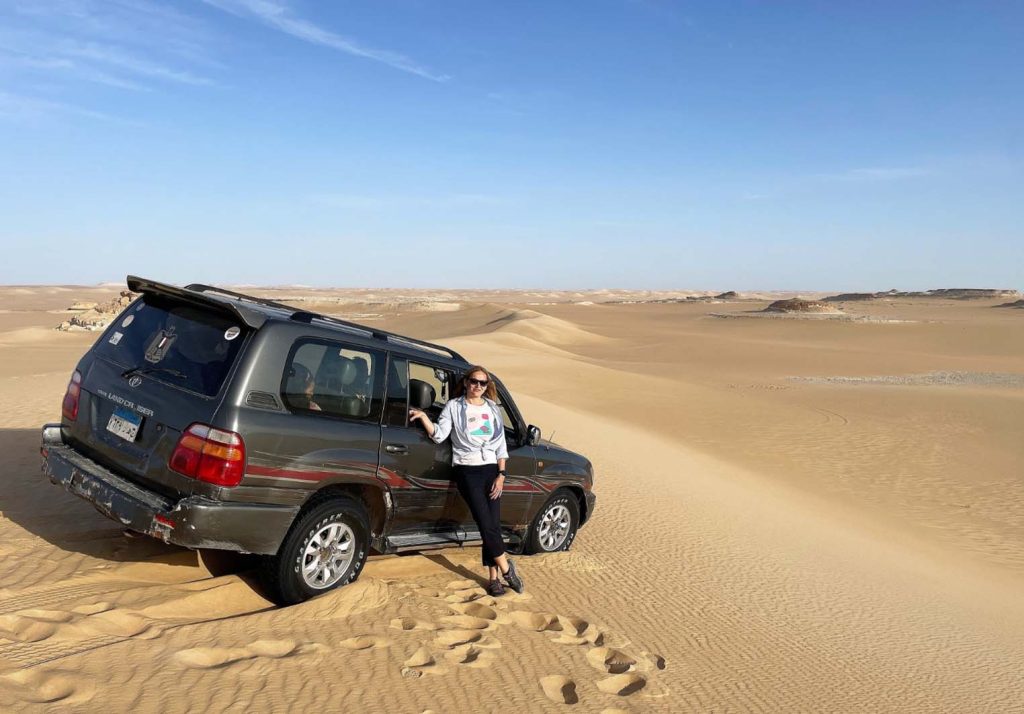
3. Visit the Hot Springs
In the Siwa Oasis and its surrounding areas, there are more than 200 natural springs, including both hot and cold springs. It might sound strange, but you’ll need your swimsuit even if you’re headed to somewhere in the middle of the desert!
Not all springs are accessible to the public, but the ones that are open to visitors are well worth a visit, especially in the winter or when the nights get chilly. There’s nothing quite like soaking in the hot springs while the air around you is a bit cold (I visited during not-so-hot weather and loved the hot springs!). These hot springs are open until late at night, allowing you to stargaze while soaking in the warm waters – it’s truly a magical experience! Two main hot springs in the area are:
Al-Maza Hot Springs:
Al-Maza Hot Springs not only feature a hot spring but also offer overnight camping. While there’s only one hot spring, it’s quite large and can be enjoyed during both daytime and nighttime, meaning you can stargaze without getting cold. Instead, you’ll be relaxing in the (very!) warm spring. There’s also a cafe on-site that serves drinks and food.
Cost: The entrance fee is 20 Egyptian pounds (less than 1 USD), plus your expenses within the hot springs.
Hayat Siwa Hot Springs:
This hot spring is a bit far from the city center (about a 25-minute drive or tuk-tuk ride) and is located on the edge of the desert. It’s especially worth visiting here at sunset or after dark when you can see the Milky Way and thousands of stars in the desert sky.
You can also stay overnight here, which is a wonderful experience (check it out on Booking.com – the reviews are excellent). Relax in the hot tub while enjoying the starry sky and truly feel like you’re “in the midst of the desert!” It’s a serene experience, far away from town. They offer rooms, tents, and larger family rooms (starting at 25 USD, including breakfast).
The hotel has a restaurant, changing rooms, and bathrooms.
Arihaleed Mountain Camp:
This mountain camp is not only a great place to visit hot springs but also a fantastic spot for evening outings. If you want to party in Siwa, you’re likely to find it here (see #4 below). Most evenings feature live music and entertainment, and you can dine at the on-site restaurant.
The hot springs here are part of a larger camp where people can stay overnight. They offer both rooms and tents, although the tents are quite basic (tents start at 30 USD per night, rooms around 45 USD per night). The campsite is beautiful, with plenty of flowers and small gardens, and there’s even a treehouse.
Osman Camp:
Osman Camp is similar to the camps mentioned earlier, offering both accommodation and hot springs. Tents start at 19 USD, three-person rooms at 30 USD per night, and four-person rooms at 40 USD per night, including breakfast. This is a simple camp surrounded by the desert, providing an undisturbed stargazing experience at night.
4.Mountain Camp Celebrations
I’ve previously mentioned the enchanting hot spring mountain camp, but it also serves as a hub for some of the most vibrant and memorable parties. During my visit, a talented DJ filled the air with the rhythms of African music, while local residents moved to the beats with grace (observing local men dressed in their traditional attire performing the mesmerizing Siwan dance was a truly captivating experience). As the night progressed, the atmosphere became even more exhilarating as the sound of drums reverberated through the camp, beckoning everyone to join in the festivities. If you’re seeking to host a lively and unforgettable party in Siwa, the mountain camp should be your top choice.
Cost: There’s no admission fee, but you can indulge in a wide variety of food and beverages available at the on-site restaurant and bar.
5.Climbing Gabal Dakrur Mountain
Gabal Dakrur is one of the higher mountains in the vicinity of Siwa. Climbing to the summit offers a panoramic view of the entire Siwa, with tens of thousands of palm trees and the desert surrounding the oasis. When I say “climbing,” I use this term very loosely… it’s a bit of an effort as you ascend some rocky parts of the trail leading to the summit, but the hiking path is clearly marked, and you can reach the top in less than 20 minutes. While we were there, families with children made it to the summit, so this is something that everyone can do.
Cost: Free
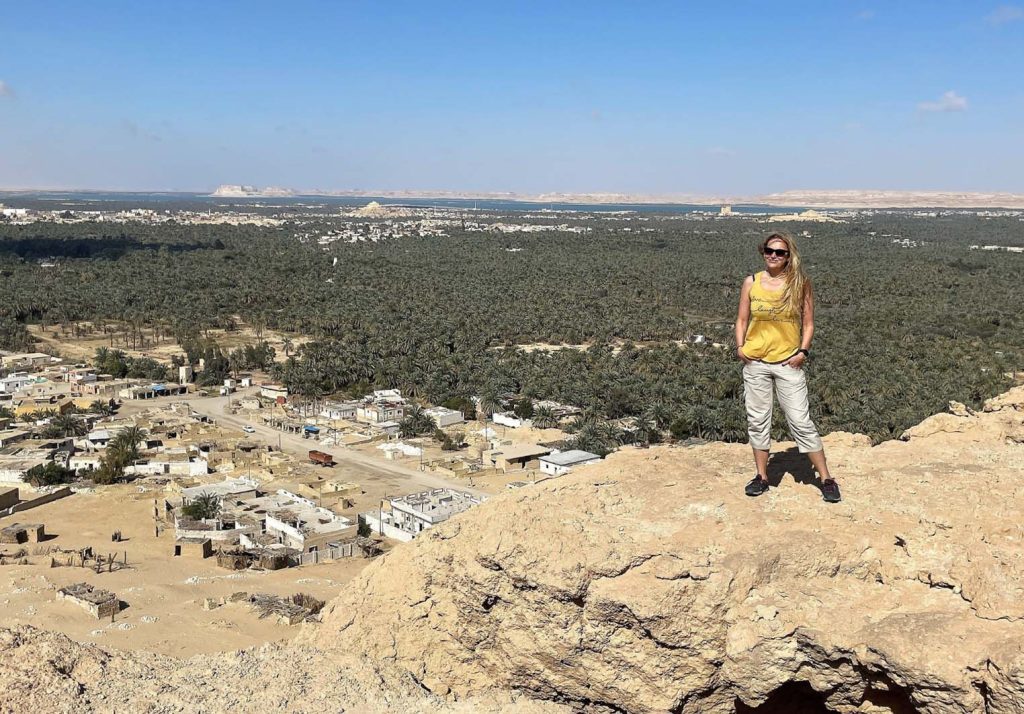
6. Floating in the Salt Lakes
Floating in the salt lakes is one of the coolest things I’ve done in Siwa. First of all, whether you intend to take a dip or not, the salt lakes are definitely worth a visit, as they come in various shapes and sizes, perfect for some great photo opportunities.
Tips: When you ask a tuk-tuk driver to take you to the salt lakes, they’ll likely stop at the large tuk-tuk stand closest to the main street. The more unique and better-shaped ones are a bit further away, and I recommend using Google Maps’ satellite view to locate some of the smaller and more interesting spots.
Cost: You don’t need to pay an entrance fee to visit the salt lakes or the area, but you will have to pay for the tuk-tuk ride to get there. Most tuk-tuk drivers offer a combination tour of the salt lakes and hot springs for 200 Egyptian pounds per tuk-tuk. The driver will wait while you float, take photos, or soak in the hot springs, but if you want to take your time, you can also pay for a ride back later. You can find a tuk-tuk along the main road to take you back to town. Be sure to agree on the price with your driver before starting the journey. Siwa Salt Lakes, Egypt
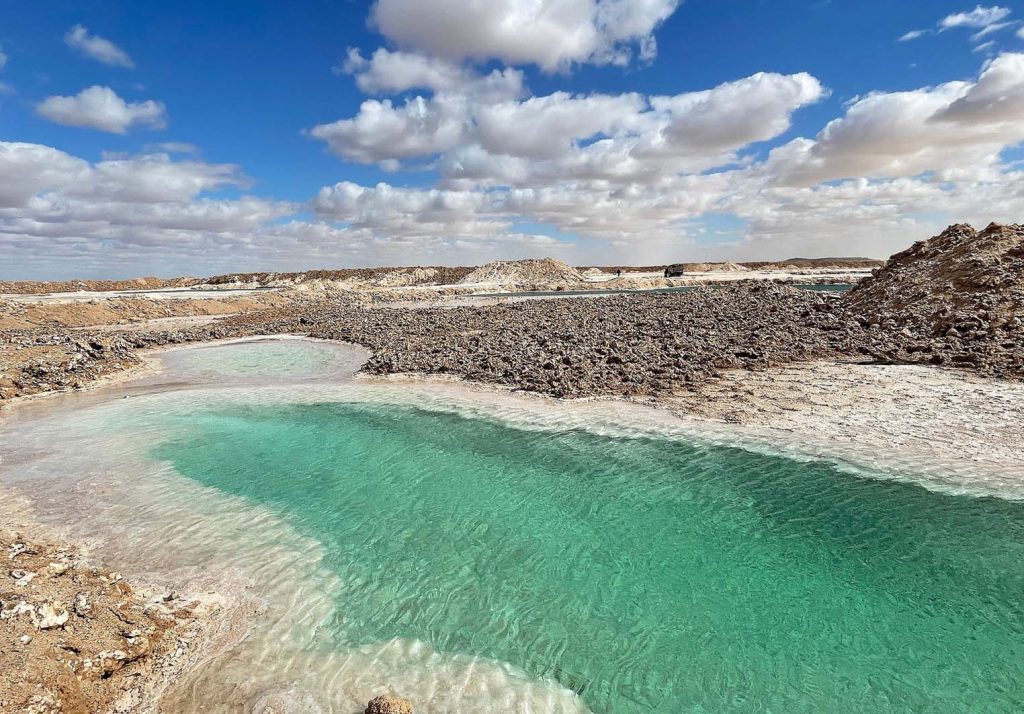
7. Explore Every Corner of Siwa with a Bicycle Rental
Renting a bicycle is a great way to explore some of the more distant places in Siwa, such as Fatnas Island, temples, or Cleopatra’s Spring. It’s also a simple way to get around Siwa and get a feel for the town. You’ll quickly realize that Siwa Oasis is quite large, with a population of 40,000 people, and it’s spread out.
If you’d rather not pay for a 4×4 desert tour, enter “Desert Viewpoint” into Google Maps and ride your bike to the starting point of the expansive White Desert after a full day of cycling. You can also ride your bike to soak in the hot springs after a day of sore muscles – or sore buttocks because most of Siwa’s roads are unpaved and quite bumpy, so be prepared for a bumpy ride!
Cost: The current price for daily rentals (from morning to evening) is 80 Egyptian pounds, and 24-hour rentals are available for 120 Egyptian pounds. Siwa, Egypt
8. Witness the Sunset at Fatnas Island
Fatnas Island is undoubtedly a great place to witness the sunset. So, don’t expect a quiet, romantic spot – it’s a popular place among the locals and can get quite crowded. When we arrived, there were already several buses in the parking lot, and I wish we had come a bit earlier as the best seats were already taken. I recommend arriving at least 90 minutes before sunset. There’s a café at the hotel where you can enjoy a cold drink or a cup of tea and relax for a few hours. Despite the bit of hustle and bustle, it’s still worth coming to this island. Siwa, Egypt
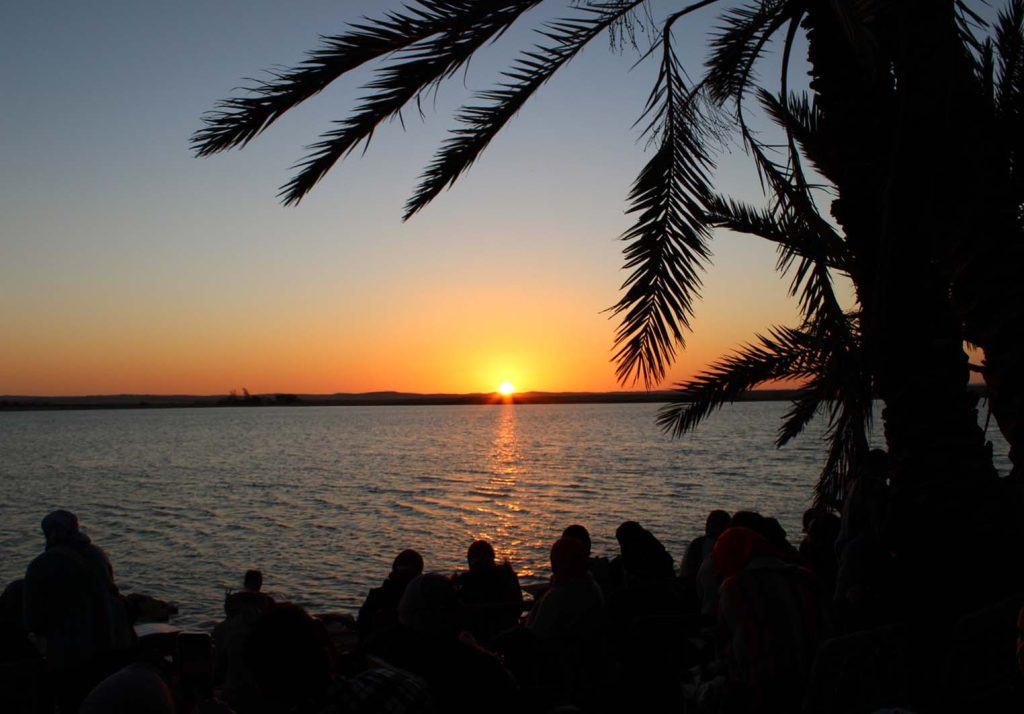
9. Temple of Amun and Temple of Umm Ubayd
The Temple of Amun is situated on a small hill in the eastern outskirts of Siwa and, as the name suggests, it’s dedicated to the god Amun. The temple itself is rather small, with not much left beyond the ruins, but it was once an important site and must have been a spectacular sight before it started to crumble. It dates back to the 26th Dynasty, which was from 663 to 535 BCE. In 331 BCE, Alexander the Great visited this temple when he came to Egypt. He consulted the Siwa Oracle, one of the most famous oracles in the Mediterranean. People, including rulers from Greece and Persia, came here to seek answers and prophecies, with the priests serving as interpreters of the divine. Legend has it that the oracle declared Alexander the Great to be a son of the gods, legitimizing his rule over Egypt.
The ruins of the temple are worth a closer look, and you can enjoy magnificent views of the oasis and desert.
Cost: 50 Egyptian pounds for the Temple of Amun.
The Temple of Umm Ubayd is just a few steps away from the Temple of Amun. Unfortunately, the temple has very little left besides a section of wall along the roadside, which contains some interesting inscriptions. However, it’s still worth visiting to see the well-preserved inscriptions and can be combined with a trip to the nearby Cleopatra’s Pool.
Evidently, this temple was dismantled as early as 1896 to make way for a mosque and a police station. Before its destruction, there used to be a causeway connecting this temple to the Temple of Amun, which both temples used during oracle ceremonies.
Cost: There is no entrance fee for this temple, Temple of Umm Ubayd.
10. Cleopatra’s Pool
Cleopatra’s Pool is a small circular pool located on the outskirts of the town. If you plan to visit the Temple of Amun and the Temple of Umm Ubayd (see above), you can combine it with a refreshing swim in this pool. Although the pool itself is man-made, it is filled with natural spring water.
The stone pool is popular among the locals, so if you don’t want to feel uncomfortable or get too much attention, be sure not to wear just a bikini (local girls tend to cover up completely). Wearing a shirt over your swimsuit should suffice.
There are plenty of small shops and cafés around the pool where you can enjoy a fruit juice or coffee after your swim, or just people-watch if you prefer not to go in.
Cost: Free for Cleopatra’s Pool.
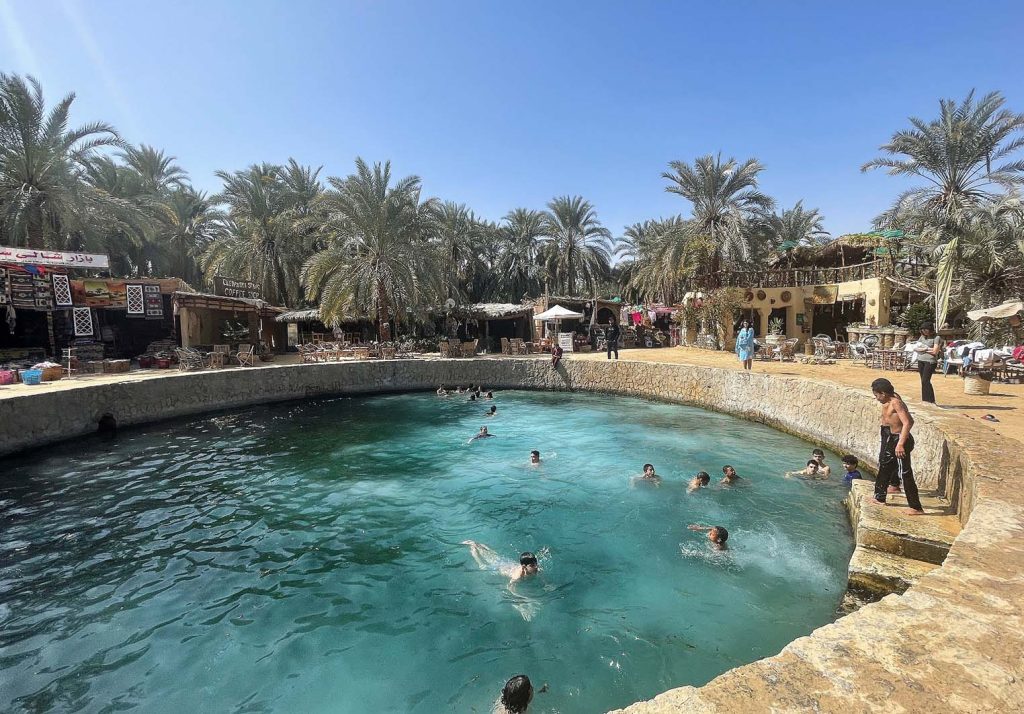
11 Tombs of Gabal Al-Mawta
This mountain is located at the northern end of Siwa and is easier to climb than Gabal Dakrur (#5). There are dozens of rock tombs here, with many ancient wall paintings that are well worth a visit. “Gabal Al-Mawta” translates to “Mountain of the Dead,” and that’s exactly what this mountain used to be – a mountain filled with the deceased. Now, the tombs are empty, but some of the paintings are still well-preserved. If you enjoyed the Valley of the Kings, you definitely don’t want to miss the tombs here. You can find a detailed description of the paintings in Gabal Al-Mawta.
Cost: Free for Gabal Al-Mawta.
